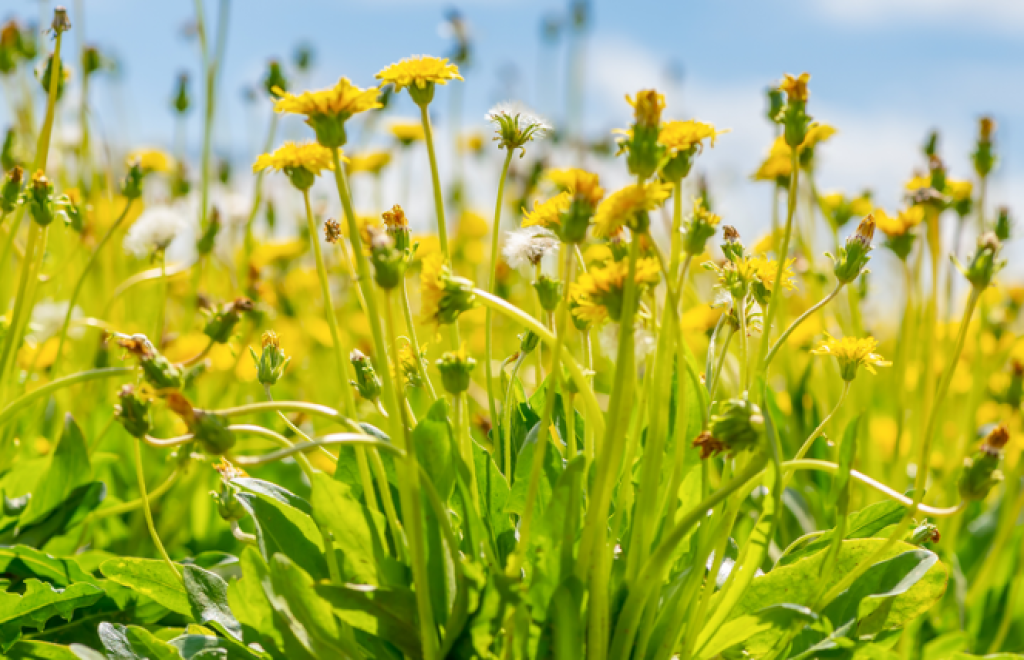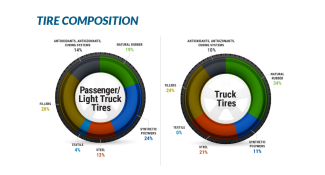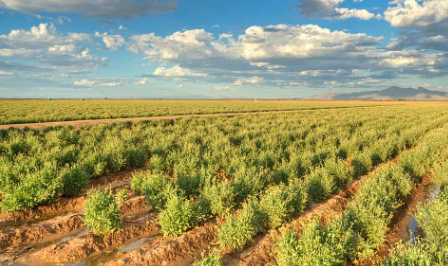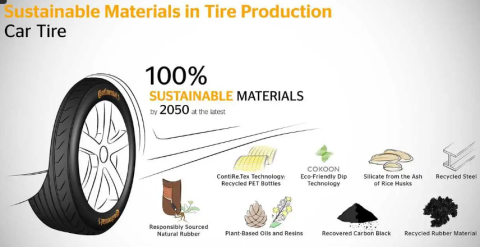What are tires made of?


Tires contain many rubber compounds and other materials because they are required to safely perform in the face of a wide range of demanding conditions. A blend of chemistry, physics and engineering come together to provide a safe, comfortable ride. Complex engineering is the best way to describe it. While designs vary by product and manufacturer, an average tire contains well over 100 separate components. Tires can include natural rubber, synthetic rubber, steel, nylon, silica (derived from sand), polyester, carbon black, petroleum, etc.
According to the U.S. Tire Manufacturer Association, here is what is in a tire.

Now are you wondering what other materials could be used to make tires? Today, we see a world wide shortage in rubber and rubber trees. This is forcing tire manufacturers to innovate and create tires out of natural resources that are easier to reproduce. Curious to those elements? Let's dive into some of what the manufacturers are creating.
Most people view dandelions as a nuisance. But they are embracing the flowering weed as a key component to the future of tires. That’s right, a manufacturer in the industry has produced, and tested, the first tires where the tread is made 100 percent out of dandelion natural rubber as a polymer.

Before you start thinking you can harvest the dandelions from your lawn into a cash crop, think again. They aren't using just any old dandelion but a specific Russian species. This is the only dandelion that can be used as an alternative source for natural rubber production. The roots of this dandelion species contain the natural rubber latex (the source for natural rubber used in tires), meaning supply will be steadier and easier to control leading to greater price stability.

In industry is also starting to use the plant Guayule Shrub. Guayule (pronounced Why-YU-lee) is a woody desert shrub that has a remarkable quality – the plant produces natural rubber, which makes it a viable, environmentally friendly, and sustainable alternative to the Hevea brasiliensis (the Pará "rubber tree").
One of the more significant examples of unique materials is the work with soybean oil. It represents a significant landmark in the replacement of petroleum-based oils in tires, and offers a strong story of sustainability and science, helping to reduce the use of non-renewable petroleum-based products.

In the future, big smokey burnouts won't merely burn rubber. Wait, what? Another global manufacturer is working on a plan to make tires completely out of sustainable, recycled materials by 2050, by simply grinding up old tires to make new ones won't be enough.

Plastic bottles are being used to create a polyester yarn used for the tire casing. Depending on the bottle size, between 9 and 15 bottles could be recycled for one tire. Rice husks are being used with the bottles as a more energy-efficient alternative for capturing polyester needed for manufacturing.
Now our question to you is, are tires vegan?


